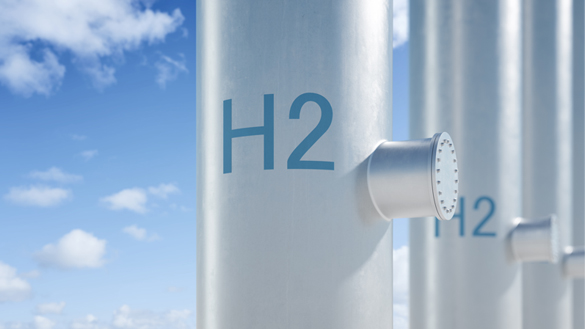Heating our homes with hydrogen
Relying on fossil fuels to heat our homes, businesses and buildings is no longer an option if we’re to reach net zero carbon emissions by 2050. We must now look to low- or no-carbon energy sources as alternatives and hydrogen is one of the most promising options.
Why do we need new energy sources to heat our homes?
Natural gas accounts for almost 85% of the fuel used for heating and cooking in UK homes, and around 40% in US homes. But, as a fossil fuel, natural gas (principally methane) produces greenhouse gas emissions when burned, which means that a significant proportion of our emissions come from heating our homes and businesses, heating water or cooking.
In the UK, burning natural gas as a fuel source at home, at work and in industry accounts for 37%1 of all carbon dioxide (CO2) emissions, 18% of which is from domestic use. This number stands at 48% in the US – 13% of which is within a residential and commercial context.2
To reach the target of net zero by 2050, it’s therefore critical that we find other fuel sources that produce low or zero emissions and hydrogen is considered an ideal alternative. One of the main challenges is to produce hydrogen on a large enough scale to be used commercially on a national basis.
Why is hydrogen being considered as a fuel for heating?
Hydrogen is the most abundant element in the universe, so there’s a lot of it available. Unlike fossil fuels (which produce harmful emissions when burned), burning hydrogen does not release carbon dioxide. So using it for heating could make a huge difference to our carbon emissions and play a critical part inachieving net zero.
Hydrogen comes in a variety of different ‘colours’, depending on the method used to produce it. The cleanest of these is green hydrogen, which is produced using electricity from renewable energy sources, such as solar or wind power.
Green hydrogen currently makes up a small percentage of hydrogen used; as demand is still low, production is expensive. But just as energy from wind power has reduced in price, green hydrogen will come down in price as it becomes more common.

The Future of Hydrogen
Find out the difference between grey, blue and green hydrogen, why it could help us to tackle climate change and how we’re looking at ways to repurpose our existing gas network to carry or blend hydrogen.
Watch our video on YouTube
Getting hydrogen into homes
To bring this clean hydrogen gas into our homes, we need to make sure that home appliances like boilers, cooking appliances and gas fires are hydrogen ready. Manufacturers have already built hydrogen boilers, so the technology is available – it just needs a widescale strategic switchover, led centrally by government.
Much like the shift from analogue to digital TV, because we know the change to our heating system is coming, plans can be made accordingly to make the switchover as simple and straightforward as possible. The government could mandate that all new gas boilers installed need to be hydrogen-ready, to ensure a smooth transition when it’s time to switch to hydrogen.
Experts are optimistic and believe that the switch to hydrogen heating will start to happen in the next 10 years, in line with UK and US government targets to cut carbon emissions by as much as half by 2035. In the US, the Department of Energy has established the Hydrogen Earthshot initiative, which seeks to reduce the cost of hydrogen to $1 for one kilogram in one decade.
The good news is that hydrogen could be transported through our existing gas network and easily stored with conventional technology. This would be a more cost-effective solution, reducing the amount of expensive new infrastructure needed to build new hydrogen transmission and distribution networks, and also minimising disruption.
Hydrogen blending trials are currently underway to find out how much hydrogen can be used in our existing pipelines.
What is hydrogen blending?
Switching over to 100% hydrogen isn’t viable yet, for reasons including that:
the infrastructure to produce hydrogen in large enough amounts is still being developed
hydrogen and methane gases have some important differences (like the speed at which the gas travels), so we need to test how the existing gas pipeline network will perform when hydrogen is introduced into it.
So scientists have been testing ways to ‘blend’ hydrogen with natural gas as a way to lower emissions, as less natural gas would be needed. Hydrogen is injected into the natural gas system, producing a ‘blend’ of natural gas and hydrogen.
Hydrogen blending in the UK
In the UK, only a 0.1% hydrogen blend is currently permitted to be included in the natural gas mix supplied to homes, businesses and industry.
One of the hydrogen blending trials taking place FutureGrid – a specially-constructed hydrogen research facility that will test the feasibility of hydrogen blends at increasing concentrations up to 100% on gas transmission assets.
At a national scale, it’s estimated that hydrogen blending could have the same carbon-saving effect annually as taking two million cars off the road. This has encouraged the Energy Networks Association (ENA) to back hydrogen blending plans across the UK. It’s expected necessary upgrades to the UK’s national transmission system could deliver a 2% blend by 2024 and a 20% blend by 2027.3
Hydrogen blending in the US
One of the first and largest clean hydrogen projects in the US, The HyGrid Project, was launched in 2021 and is located on Long Island. By blending green hydrogen into the existing distribution system, it will help to decarbonise the existing gas networks and is expected to heat approximately 800 homes, as well as providing pure and blended hydrogen for use in vehicles.
Other National Grid projects in the pipeline for both the production and utilisation of green hydrogen include a multi-use hydrogen facility, to be in central New York in 2023.
Last updated: 2 Aug 2022
The information in this article is intended as a factual explainer and does not necessarily reflect National Grid's strategic direction or current business activities.
See all energy explained articles
Sources
1Hydrogen: Testing the heating fuel of the FutureGrid
2United States Environmental Protection Agency: Sources of Greenhouse Gas Emissions; and
U.S. Department of Energy: Hydrogen Benefits and Considerations
3Edie: Hydrogen blending ready for UK-wide rollout next year…



